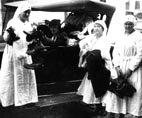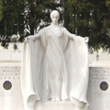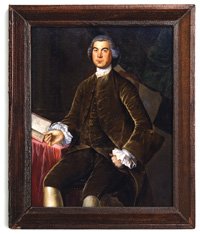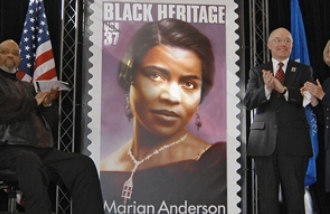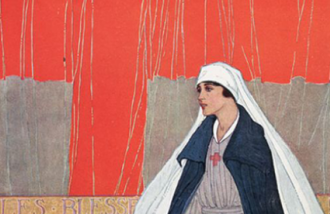In this exhibition, we took objects from the museum collection and described each staff member’s unique perspective on the object based on their job. Throughout the exhibit we asked visitors to add their comments and questions. Here are our answers to their questions, as well as some of their comments.
If you'd like to join the conversation, email your questions or comments to [email protected].
Meet The Experts
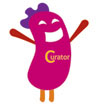 Curators are experts in studying objects. They become experts through examing, researching and writing about objects in museum collections.
Curators are experts in studying objects. They become experts through examing, researching and writing about objects in museum collections.
Registrars maintain records of accession, condition and location of objects in a museum collection, and oversee movement, packing and shipping of objects to conform to insurance regulations. 

Educators enhance the learning experience for the museum visitor. They take the curator's information about objects and present it to museum visitors of all ages. They place the objects in the context of history and of visitor's experiences by planning, organizing and conductiong school programs, special tours, lectures, demonstrations and exhibits for a diversified audience.
Your Questions Answered
Visitor: Who reads these questions?
Educator: Different staff members. We check the gallery regularly to pick up the questions and then email indivdual questions to the appropriate staff member for answers.
Visitor: How do you get these artifacts?
Curator: Most of the artifacts were given by DAR members. They've been donating their family treasurers since 1890! We purchase some of the items, using money that members (and others who like the museum) have given us.
Visitor: Why do you have a museum?
Educator: The purpose of the DAR is to promote historic preservation, education, and patriotism. The museum preserves historic artifacts, and educates the public about them through exhibitions and programs.
Visitor: What is your favorite part of your job?
Curator #1: I’d have to say “connecting the dots” – verifying the history, ownership, genealogy, etc. of an object and finding the connections that link it to the present day. I enjoy hearing the stories that donors have to tell about the items.
Curator #2: My favorite part is doing research and examining objects to see how they were made and used.
Registrar: My favorite parts of my job are installing exhibitions and updating information in the museum database.
Educator #1: It's providing alternative outlets such as crafts, games and tours to learn about history.
We Ask, You Answer: Why do you think it is important for the DAR Museum to keep damaged objects?
Your answer: To show the history of the object
We Ask, You Answer: Do you have heirlooms with interesting family histories?
Your answers: My great grandmother's ring; marble clock hand carved by my great great grandfather; a ceremonial sword- my great great great grandfather's who was one of the first surgeon generals; my great grandmom's pink hat; 1980s jacket
Visitor: When did you make the museum?
Educator: When the National Society Daughters of the American Revolution began in 1890, the founders created a goal of collecting and preserving "documents and relics and... the records of the individual services of the Revolutionary soldiers and patriots." The founders envisioned a collection of objects that carried with them a history of use by the individual men and women- both famous and ordinary- of the colonial and revolutionary periods. We have been collecting ever since!
Visitor: When was the building built?
Educator: Memorial Continental Hall (the part of the building with the period rooms) was built between 1904 and 1910. The Administration Building (where the gallery is located) was built in two parts. The first part was between 1921 and 1922 and the second part was between 1949 and 1950. Constitution Hall was built between 1928 and 1929.
We Ask, You Answer: What clothing items have you saved?
Your answers: Dance recital costumes; my great great great great grandmother's baptism gown- used until 1991; a flapper dress made by my great grandmother
We Ask, You Answer: What odd or unique things do you collect?
Your answers: Eggs; water bottle caps; bobble heads; shot glasses; kilted Scottish Santas
We Ask, You Answer: Why do you think it is important for the DAR Museum to keep damaged objects?
Your answer: It can continue to unlock secrets of our past.
Visitor: How long did it take for the women to get dressed [in reference to the dress from 1888-1893 in the exhibition]?
Curator: Longer than putting on undies and T shirt and jeans! Of course it varied a bit over time, but generally, before the 1920s, women had to wear several layers, and some of them required complicated fastening.
First came the shift, like a knee-length nightgown. Then the “drawers” (longer versions of underpants) and then corset. By the 1860s corsets were made with hooks in front so it took less time than before, when you had to lace strings through the holes in the back. Then one or more petticoats to give bulk to the dress skirts, then either a hoop or a bustle (between about 1858 and 1880s). Stockings, which might need to be put on before the corset during times when the style of corset didn’t let you bend over! Then the bodice and skirt (some periods had mostly one-piece dresses, other times two pieces were more common). Shoes might be slip-on or around 1890-1910, could be high-laced or hard-to-button-up boots.
All this probably took at least half an hour first thing in the morning. Then add some time to do up your hair, which women always kept long. If you were fashionable, you might do an elaborate hairdo every day. And in that case you would also have to dress several times a day for their different social activities! You’d keep the underwear layers on, but still had to get out of your dress and into another one for the afternoon or evening. Phew!
Are you glad you can wear shorts and a T shirt most (summer) days??
Visitor: Why is the necklace made out of human hair?
Curator: It seems really strange to us now—even pretty nasty—but in the 1700s and 1800s, people liked to cut a lock of hair of a loved one or friend to remember them by. (Sometimes this was done to remember someone who had died, but other times it was just a sentimental souvenir.)
Often people would take the hair and put it under glass in a ring or earrings, or just braid/weave it (or have it done professionally) and get it made into other pieces of jewelry. It’s hard for us to imagine wanting to have someone’s hair tickling your wrist or neck—but it was a way of keeping your loved one in mind.
Visitor: How do you know an object's history?
Curator: Before the museum accepts an object for the collection, we always try to obtain its provenance or history. This museum is fortunate because many objects come from family members having been passed down from the original owner from generation to generation. When the object moves overtime with the family, its final destination is often far from its original location; for example an 18th century chair made in New England may end up on the West Coast by the 21st century. Without the family connection, it might have been difficult to discover this chair’s history.
If we obtain an object from a collector or dealer, however, it can be much harder to trace its history. However through curatorial experience and research, we can determine an approximate date of origin and the general location where it was made. We can also try to verify any information that the collector or dealer might have. The DAR Library with its local history and genealogical collections and the DAR Museum Library with its decorative arts reference material are great aids to the curators in this regard.
Visitor: How do you know how old something really is?
Curator: There are many clues to an object’s age. Curators look for: stamped maker’s marks on metals plus construction details; paintings signed and sometimes dated by an artist and the materials used; markings on ceramics and their materials; fabric and patterns in textiles; styles and construction of costumes; dates, names, and teachers stitched on needlework; general construction of furniture, tool marks, and hardware. Through experience and study we also know the various styles that evolved overtime. Sometimes we are fortunate to discover a precise date, but in many cases we cannot and can only date the object within an approximate time in a specific century.
Visitor: Does the silver tarnish behind the glass?
Registrar: The glass doors on the silver display cases reduce the amount of air flow around the silver, so the silver does not tarnish quickly. We try to polish it as little as possible, but we usually have to wipe it down or use a small amount of polish about once a year.
Visitor: What is the snuff box made out of?
Registrar: The snuff box in the "Try to See It My Way" exhibition is made of a ram's horn with silver decoration a silver box to hold the snuff.
We Ask, You Answer: Why do you think it is important for the
Your answer: Not every item can be perfect. You also protect it from further damage and deterioration.
We Ask, You Answer: What odd or unique things do you collect?
Your answer: Quilts; I collect pennies.
We Ask, You Answer: Do you have heirlooms with interesting family histories?
Your answer: My mother (who was born in 1931) has a small mug with an eye on the bottom and says "I'm watching you" at the top. It belonged to her father before she was born.
We Ask, You Answer: What odd or unique things do you collect?
Your answers: travel spoons and porcelin dolls; key chains; lace bobbins
Visitor: What is the name of the material that prevents tarnishing? Where can I buy some?
Registrar: The material that prevents tarnishing is called Corrosion Intercept® and it is available in a wide variety of forms from companies that sell archival supplies such as University Products and Talas. Some forms are also available through various internet sources.
Visitor: Some of the silver items have Paul Revere on them- is this the pattern or was he the silversmith?
Curator: Paul Revere was the silversmith. He was one of Boston's most prominent craftsmen. He studied silversmithing under his father and took over the family business at the age of nineteen.
Visitor: Who's gun was that?
Curator: The gun belonged to Captain John Curd of Goochland County, VA in the late 1700s.
Visitor: Was the doll carriage donated by Emma Hall? If not, why was she mentioned on the board?
Curator: The doll carriage was used by Emma Hall. It was donated by the Cotton Tufts Society, Children of the American Revolution (CAR)
Visitor: Around what age would girls get married?
Curator: The usual age for marriage in colonial and later America was the early to mid 20s. Young people generally needed to wait until the husband could support a wife. A young man either needed to be established in a trade (such as shoemaking, carpentry, blacksmithing, etc.), a business (such as owning or being a partner in a store), or a farm (being able to buy some land of his own, or having land given to him by his father).
Visitor: How young were girls when they had to start wearing corsets?
Curator: In colonial America, girls wore corsests starting as toddlers- even boys wore them for a few years of childhood. These were not corsets that pulled in the waist, made it hard to breathe, or were unhealthy. They were mostly to encourage good posture. By the time of the Revolution, however, attitudes were changing and people were thinking that putting children in corsets was not a good idea. The new idea was that children needed clothing that did not restrict their movement, but that allowed them to play and be more "natural."
We Ask, You Answer: What odd or unique things do you collect?
Your answers: snow globes; pop tops and bottle caps; anything shiny and weird that I don't know what it is; trading cards; glass cats; Japanese items
We Ask, You Answer: Why do you think it is important for the DAR Museum to keep damaged objects?
Your answers: Sometimes damage may show the inner workings of something so we can see how it was made (like the elephant); you never know when a repair may be developed; so the next generation can view the objects too; life isn't pristine- the objects we use to remember it by shouldn't be; they are important artifacts that tell much about our past and way of life
We Ask, You Answer: What odd or unique things do you collect?
Your answers: Magnets of places I've been; fox hunt memorabilia; key chains from places I visit; mashed pennies; young adult mysteries from the early- mid 1900s- Nancy Drew, Cherry Ames, Vicki Barr; UVA tumblers from games; a little bit of everything really
We Ask, You Answer: What clothing items have you saved?
Your answers: The crepe de chine and Belgian lace handkerchief my mother had made to match her 1933 wedding dress, during the Great Depression no less!; my mom saves my favorite clothes so she can make a quilt out of them; my baby clothes; Halloween costume from my first year of Halloween; bell bottoms and Dr. Scholls clogs from the 1970s
Visitor: Why were the backs of dresses so big?
Curator: The backs of dresses weren't always that big, but the dress in the exhibit is from a period when women had a variety of styles with extra fabric in back. They wore wire or padded "bustles" tied around their waists underneath the dresses to give them extra bulk. Noone actually thought women's bodies were bigger in back, though. It was just what was fashionable for a while. At other times, fashions have had huge puffy sleeves, or big wide circular skirts, or very high waists, or very short skirts or very tight ones-- or other extremes that look odd to us once the fad has passed.
Visitor: How did the elephant's head come off? Was it old?
Registrar: Yes, the elephant is a child's pull toy made between 1875 and 1900. The head is meant to be separate from the body. The elephant's head has a hook that fits through a loop on the elephant's neck so the head can bob up and down as the elephant is pulled by a child.
Visitor: What is the oldest item here?
Registrar: The oldest item in the museum collection whose date we can determine is a two volume set of books on the history of France which was published in 1617. Other objects date from the mid-17th century to the early 18th century, but it is difficult to pin down precisely when they were made because they are not marked with a date. We look at the style, the construction, and family history or maker information to determine a good estimate for when these items were made. The oldest objects in Try to See It My Way are the teapot (1763), the corset (1769) and one of the dresses (1769-1799).
Visitor: Can we buy some of these items from you?
Curator: We don't sell items from our collection, but the museum shop has items that are similar to things in the collection.
Visitor: Why do you have such a big place?
Curator: We actually have three buildings that are connected and that occupy the city block between 17th and 18th Streets between C and D Streets. The DAR Museum is just one of the many activities that takes place here. Besides our gallery and period rooms, we have storage for the rest of our collections. There is a large library, where you can research your family history. There is a manuscripts collection, and a large auditorium for meetings and for concerts. Plus, there are all the offices that it takes to keep an organization with 170,000 members running smoothly.
Visitor: How many things do you show?
Registrar: 10% of our collection is on display in our period rooms and galleries and 90% of our collection is in storage.
Visitor: Why is the chair knocked over?
Registrar: It is turned over to show where it is numbered. Every object is assigned a number and it can be written in many different places.
Visitor: How can I volunteer at the museum?
Educator: To be a docent at the museum, you must be an active member of the DAR. However, we do offer internships to upperclassmen undergraduate and graduate students studying history, museum studies, or a related field.
We Ask, You Answer: Why do you think it is important for the DAR Museum to keep damaged objects?
Your answers: So people can see how old things are; for you to see old things from a very long time ago like your cannon ball; because every object has a story; because you might discover something; because they are cool and very old things are unique
We Ask, You Answer: What clothing items have you saved?
Your answers: Baby clothes; sweatshirts and coats; my father's 85 year old christening dress; vintage David Bowie t-shirt that was worn by his session guitar player
We Ask, You Answer: What odd or unique things do you collect?
Your answers: Rocks and key chains; chopsticks; reamers (juicers)
We Ask, You Answer: Do you have an unusual dining piece for your table?
Your answers: Yes, baby spoons and baby forks even though our youngest child is almost nine; very old spoons and silverware
We Ask, You Answer: Why do you think it is important for the DAR Museum to keep damaged objects?
Your answers: They're from back in history; even if they are broken, they are still historical; so they can restore them so people can see them
We Ask, You Answer: What odd or unique things do you collect?
Your answers: Penguins, pig statues and polished rocks; Girl Scout items; chickens; dogs; shoes; clothes
We Ask, You Answer: Do you have an unusual dining piece for your table?
Your answer: A glass chicken
We Ask, You Answer: What clothing items have you saved?
Your answers: Pants; jeans; Doc Martin boots and Chuck Taylor tennis shoes; accessories
We Ask, You Answer: Why do you think it is important for the DAR Museum to keep damaged objects?
Your answer: So people can look back into the old time
We Ask, You Answer: What odd or unique things do you collect?
Your answers: Swimming ribbons; miniature/small cups; candle snuffers; stamps, coins, and sugars; snowglobes; coffee cups
Visitor: When did Dave make that old signature pot?
Educator: He made it in 1861.
Visitor: Is this a powder or shot flask? Looks like a shot flask to me. Maybe check it.
Curator: Thank you for calling this to our attention. When this object was donated to the museum in 1949 it was classified as a powder flask. However, it appears it is a shot pouch, as you suggested. The particular levers on the charger with some other features indicate that classification. This exhibition will come down shortly and we will certainly re-examine the object. Again, thank you- we appreciate your interest.
Visitor: What is with the pair of pants?
Educator: They may look like pants, but they are actually drawers, or pantalets. Vina Boardman Scoville, who owned these drawers, wore them under her dress like we wear underwear today.
We Ask, You Answer: What odd or unique things do you collect?
Your answers: Stickers; bottle tops; Tiffany jewelry boxes
We Ask, You Answer: What clothing items have you saved?
Your answers: Our family has been using the same Christening gown since the 60s; my mom saved my baby jumper
Visitor: How many visitors do you get each day?
Educator: It varies depending on the time of year and what we have going on in the museum. Even the weather affects our visitor numbers! We can get as little as 12 and as many as 200 in a day.


